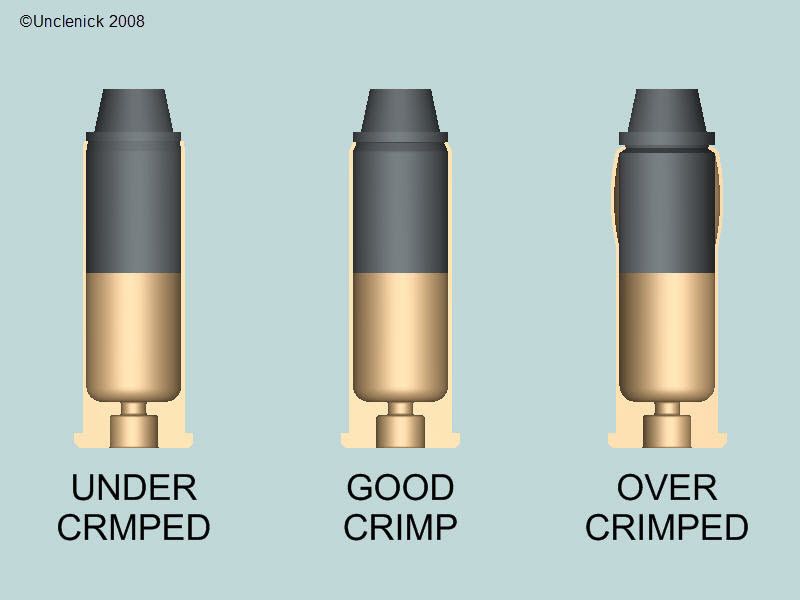This is my first post and I appreciate the technical expertise which most of you display.
I recented started reloading again after a 2 decade hiatus. I had no problem with the first few hundred rounds of .45 ACP using a RCBS Rockchucker with a RCBS 3-die set and my pet load using Hornady 200 GR LSWC. I tried reloading some 230 GR FMJ and the finished bullet would not drop into the chamber. I checked the overall length of the bullet and case length which were within the maximum limits. I deburred both the inside and outside of the case mouth. The resized brass drops in fine, but after seating the bullet, the finished bullet seems too wide. The mouth of the case is about 0.460 - 0.465" with the bullet seated. I went back to my pet 200 GR LSWC load and it now does the same thing. I have not adjusted the height of the seating / taper crimp die since first purchasing this set up 35 years ago. The base of the die touches the shell holder, so I presume the taper crimper is crimping as much as possible.
Has anyone heard of a seating die / taper criming die wearing out? I have probably reloaded 10,000 rounds with this set up without any problems.
I recented started reloading again after a 2 decade hiatus. I had no problem with the first few hundred rounds of .45 ACP using a RCBS Rockchucker with a RCBS 3-die set and my pet load using Hornady 200 GR LSWC. I tried reloading some 230 GR FMJ and the finished bullet would not drop into the chamber. I checked the overall length of the bullet and case length which were within the maximum limits. I deburred both the inside and outside of the case mouth. The resized brass drops in fine, but after seating the bullet, the finished bullet seems too wide. The mouth of the case is about 0.460 - 0.465" with the bullet seated. I went back to my pet 200 GR LSWC load and it now does the same thing. I have not adjusted the height of the seating / taper crimp die since first purchasing this set up 35 years ago. The base of the die touches the shell holder, so I presume the taper crimper is crimping as much as possible.
Has anyone heard of a seating die / taper criming die wearing out? I have probably reloaded 10,000 rounds with this set up without any problems.



